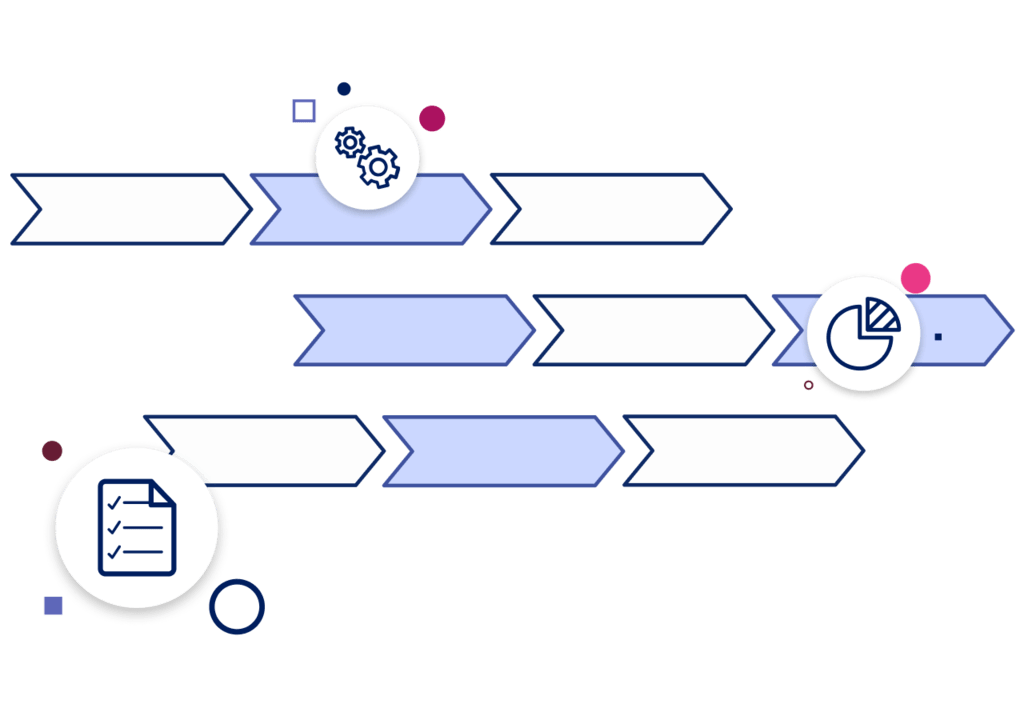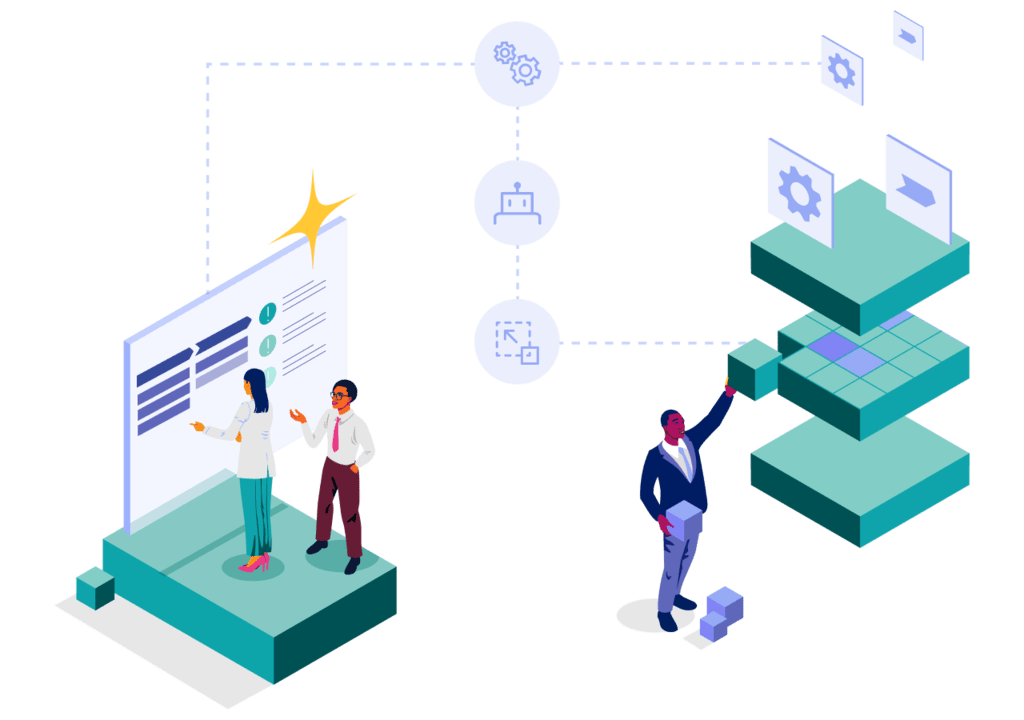Process orchestration
Automate and optimize workflows across systems for best-ever efficiency and consistency

What is process orchestration?
Process orchestration is a set of tools that allows organizations to automate and manage workflows across systems and applications. By bringing together tasks, data, and processes, businesses create seamless, efficient, consistent workflows that improve resource allocation, response times, and collaboration.
What’s the difference between process orchestration and process automation?
Why is process orchestration important?
As business needs change, process orchestration makes it easier to adapt. Integrated workflows reduce errors and foster better collaboration so organizations can respond quickly to priority shifts. Better productivity and consistency enables smarter decision-making and planning.
Benefits of process orchestration
- Streamlined workflows
By automating and orchestrating multiple individual tasks, process orchestration ensures smooth workflows and data reporting. The result is reduced delays and enhanced efficiency. - Faster turnaround times
Automating repetitive tasks, reducing manual work, and optimizing resource allocation allows for quicker, smarter decision-making. Shortened wait times come as a result of speedier workflows. - Personalized service
Infusing customer data to automated workflows makes it easier to offer tailored interactions and timely responses. Better workflows help businesses provide service that meets each customer’s needs.

How does process orchestration work?
Process orchestration automates workflows by defining the order of tasks, coordinating necessary resources, and managing the flow of data. Established milestones trigger processes in perfect timing, while maintaining a chain of command that provides transparency and control for stakeholders.

Make service effortless. Orchestrate every journey with AI and automation.
What are some challenges associated with process orchestration?
Integrating diverse data sets, scaling across silos, and maintaining workflow visibility are among the challenges of process orchestration. Additionally, designing these workflows and the potential downtime of implementation can add complexity.
- Integration
When bringing together an organization’s varied systems across departments, it’s critical to make sure the right data goes to the right place to make sure nothing is lost in the process. - Scalability
As businesses change, existing processes can lose effectiveness and integrity. The more complex a process, the more chance there is for issues and disruptions to arise. - Maintenance
Optimizing processes is key to keeping business flowing smoothly. Without barriers and best practices in place, changes can trigger issues in consistency and continuity.
How to mitigate these challenges
- Ensuring optimal process orchestration means unifying diverse, siloed systems to ensure seamless data flow, consistency, and real-time access across workflows.
- In order to manage increasing workloads and changing needs, process orchestration must be able to effectively manage complexity and variability – even as demand increases.
- Updating workflows across multiple interconnected systems is key to keeping business moving. Preemptively managing dependencies ensures reliability and performance.

What are some use cases for process orchestration?
By automating complex business workflows – from order fulfillment, to cross-channel data integration to supply chain operations – leaders across industries can transform processes for the better.
Healthcare
From streamlining claims submission and reimbursement to automating patient onboarding and ensuring compliance with changing regulations – process orchestration helps healthcare providers improve experiences for both patients and staff.
Financial Services
Automating loan approvals. Streamlining KYC (Know Your Customer) checks. Coordinating fraud detection across platforms. Process orchestration helps ensure regulatory compliance, manage payment processing, and integrate systems for efficient financial reporting and customer service.
Insurance
Between automating policy underwriting and streamlining claims processing – process orchestration integrates customer data across platforms while ensuring regulatory compliance. By coordinating multi-step workflows for risk assessments, renewals, and customer support – insurers can enhance efficiency while reducing manual effort.
Capabilities to look for in a process orchestration platform
The best process orchestration platforms offer low-code functionality and intuitive workflow design, paired with scalability, automated error monitoring, data integration – plus built-in compliance and support features.

Telenet orchestrates and automates customer service with Pega
Steps to successful process orchestration implementation
Once you have your business goals defined, it’s time to map existing workflows and identify inefficiencies. The right platform makes designing and testing your new processes easy. Once you’ve got it up and running, monitoring performance allows for continuous improvement.
Plan and design
Map workflows based on key business processes. By defining roles and outlining integrations, enterprises ensure efficient, cohesive operations.
Build and integrate
Developing workflows includes configuring the right automations and connecting systems to ensure seamless data flow and functionality across processes.
Test and deploy
Now, it’s time to validate workflows, check integrations, and resolve errors before launching to ensure smooth operations that meet performance requirements.

Frequently asked questions about process orchestration
Simply put, BPM (Business Process Management) is strategic, while process orchestration is tactical. BPM designs, models, and optimizes business processes to move toward continuous improvement and organizational goals. Process orchestration automates the execution of these processes across systems to ensure seamless data flow and task coordination.
Complex organizations across sectors such as healthcare, finance, and insurance tend to benefit most from process orchestration. These types of organizations can streamline operations using automated workflows that ensure compliance and integration across departments.
Using automated error detection, logging, and alerting mechanisms, ensures continuity – along with recovery procedures like retries and fallbacks. Dashboards allow users to monitor workflow statuses to address issues promptly and maintain operational integrity.
